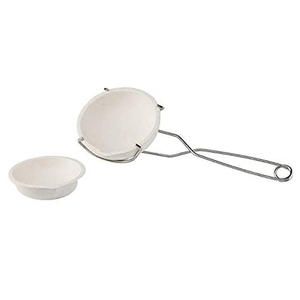Introduction to Ceramic Products: Connecting Practice with Modern Material Scientific Research
Ceramic products have progressed much beyond their historic origins in pottery and art, ending up being crucial parts in aerospace, electronics, medicine, and energy systems. Specified by their not natural, non-metallic make-up and high-temperature handling, modern-day ceramics offer unparalleled performance in extreme atmospheres. Whether as insulators in integrated circuits, implants in human joints, or architectural products in jet engines, ceramic items today represent a fusion of old craftsmanship and innovative nanotechnology.
(Ceramic Products)
Classification and Practical Properties of Ceramics
Ceramic products can be extensively identified into conventional (e.g., blocks, ceramic tiles, porcelain) and innovative (e.g., silicon nitride, zirconia, alumina) types based upon structure and application. Standard porcelains are valued for their affordable, sturdiness, and aesthetic appeal, while advanced ceramics master mechanical stamina, thermal resistance, and electric habits. Their unique combination of hardness, rust resistance, and bio-inertness makes them vital where steels and polymers fail, specifically under high tension, temperature level, or chemical direct exposure.
Production Processes and Technological Advancements
The manufacturing of ceramic items entails powder synthesis, shaping, sintering, and ending up– each action important to achieving preferred residential properties. Technologies such as stimulate plasma sintering, additive manufacturing, and colloidal processing have actually significantly enhanced dimensional accuracy, microstructural control, and practical integration. These innovations enable intricate geometries and multi-functional designs that were previously difficult with conventional approaches like slip casting or dry pressing. Such development has actually expanded the range of ceramic applications across industries.
Role in Electronic Devices and Semiconductor Industries
In the electronics industry, ceramic products function as substratums, capacitors, sensors, and shielding parts because of their superb dielectric residential properties and thermal security. Multilayer ceramic capacitors (MLCCs), as an example, are found in almost every electronic gadget, from mobile phones to electrical lorries. Alumina and light weight aluminum nitride substratums are widely used in power components and LED warmth sinks, ensuring effective thermal administration and long-term integrity in high-performance systems.
Medical Applications: Bioceramics and Implantable Devices
Bioceramics represent among the fastest-growing segments in the ceramic item market. Products like hydroxyapatite, alumina, and zirconia are utilized in dental implants, bone replacements, and joint prostheses as a result of their biocompatibility and wear resistance. Unlike metallic implants, ceramic-based devices reduce ion leaching and reduce allergic reactions, making them perfect for long-lasting implantation. Recent advancements in permeable scaffolds and bioactive glass-ceramics further improve tissue integration and regenerative capabilities in medical treatments.
Aerospace and Defense: Ceramics in Extreme Conditions
Ceramic products play an essential role in aerospace and protection systems where products must endure extreme temperatures, pressure, and effect. Components such as turbine blades, rocket nose cones, and thermal defense floor tiles depend on ceramics like silicon carbide and zirconium dioxide to maintain structural honesty under hypersonic rates and re-entry problems. Their light-weight nature integrated with high compressive strength likewise makes them eye-catching for armor plating and ballistic shielding in military applications.
Environmental and Power Technologies Using Ceramics
( Ceramic Products)
From fuel cells to hazardous waste encapsulation, ceramic products are central to lasting energy and environmental remediation modern technologies. Solid oxide gas cells (SOFCs), for instance, depend upon yttria-stabilized zirconia electrolytes to enable efficient energy conversion at heats. In nuclear design, porcelains like SYNROC (artificial rock) are created to debilitate contaminated isotopes in secure crystalline matrices. Furthermore, catalytic ceramic membrane layers are being deployed in water filtration and commercial emission control, contributing to worldwide sustainability initiatives.
Market Patterns and Worldwide Demand Drivers
The international ceramic items market is witnessing robust development, fueled by demand from electronics, healthcare, automobile, and renewable resource markets. Asia-Pacific stays the largest manufacturer and customer, driven by China’s production prominence and Japan’s leadership in advanced porcelains. The United States And Canada and Europe comply with very closely, sustained by R&D financial investments in wise porcelains and eco-friendly innovation efforts. As automation and digital design tools come to be much more integrated into ceramic manufacturing, production performance and personalization capabilities remain to increase.
Difficulties and Future Directions in Ceramic Product Development
Regardless of their benefits, ceramic products deal with difficulties including brittleness, minimal ductility, and high handling expenses. Continuous research concentrates on boosting toughness through nanostructuring, composite reinforcement, and self-healing systems. Recycling and end-of-life recovery also stay areas for renovation, specifically in high-value however difficult-to-reprocess parts. Looking onward, the convergence of AI-guided material design, 3D printing, and smart sensing will certainly redefine just how ceramic products are crafted, produced, and applied across future industries.
Vendor
Advanced Ceramics founded on October 17, 2012, is a high-tech enterprise committed to the research and development, production, processing, sales and technical services of ceramic relative materials and products. Our products includes but not limited to Boron Carbide Ceramic Products, Boron Nitride Ceramic Products, Silicon Carbide Ceramic Products, Silicon Nitride Ceramic Products, Zirconium Dioxide Ceramic Products, etc. If you are interested, please feel free to contact us.(nanotrun@yahoo.com)
Tags:
All articles and pictures are from the Internet. If there are any copyright issues, please contact us in time to delete.
Inquiry us

